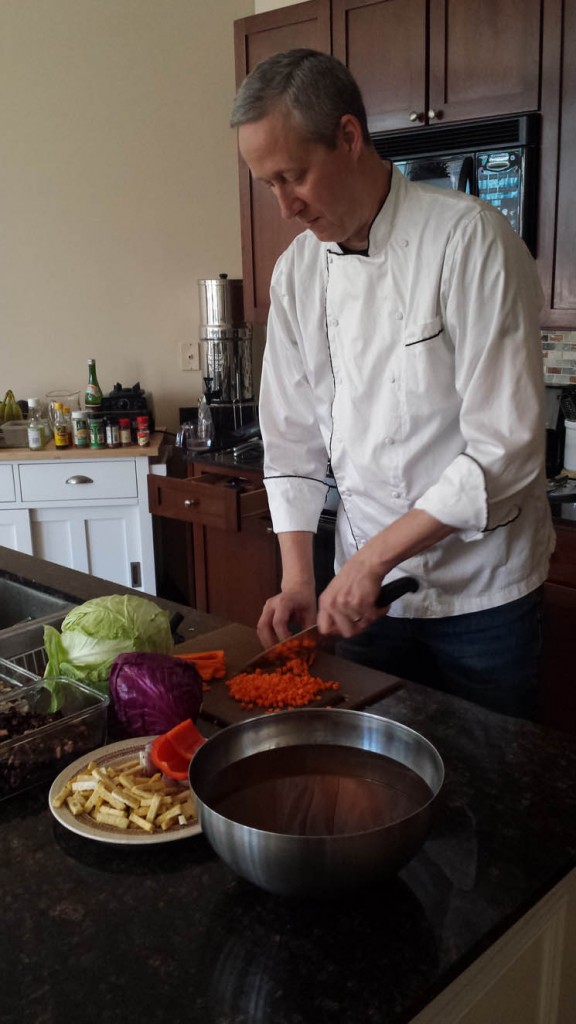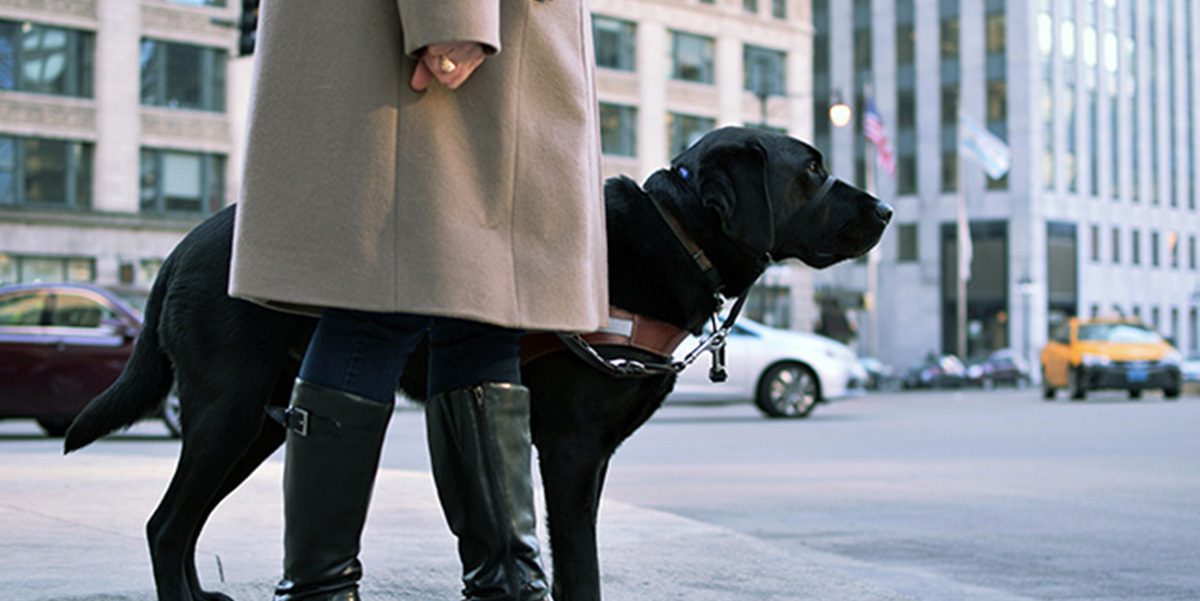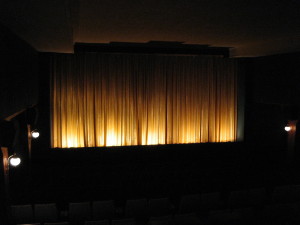It's not rocket science — it's better.
May 25, 2016 • 1 Comment • Posted in blindness, guest blog, UncategorizedI was a terrible cook when I could see, and a miraculous change didn’t happen when I went blind.
I’m still a bad cook.
Our neighbor and friend Jim Loellbach is a chef, and before attending Le Cordon Blue, he was an aeronautical engineer at NASA. Proves what I’ve known all along. Cooking is rocket science.
Mike threw a spectacular birthday party for me last year, and one (of many) highlights was having Chef Jim there to create scrumptious appetizers for all the guests. Mike knew Chef Jim would not disappoint: The two of us have had the privilege of enjoying many magnificent homecooked meals with Jim and his wife Janet (a good cook in her own right) ever since we moved to Chicago’s Printer’s Row neighborhood in 2003.
I love hearing Jim’s stories about summers at his grandparents’ small farm in Wisconsin and how he, his sisters and their cousins all helped with growing, preparing and preserving food there. He says back then he never considered cooking as a career, “but a seed must have been planted.”
Over the years Chef Jim has worked as a cook and sous chef in several Chicago restaurants and hotels — including the Four Seasons and the Pump Room. Late last year he opened Custom Provisions, his own business offering personal chef service and culinary instruction. This week a guest post Chef Jim wrote about his first clients was published on the American Personal & Private Chef Association’s official personal chef blog.
Jim opens his guest post acknowledging he’s new to the personal chef game and recently landed his first regular clients. “They’re a busy couple with a one-year-old child and another due in about six months,” he wrote. “In addition to the normal challenges that face any new personal chef, I’ve had to face one more: My clients are vegans.”
Chef Jim’s guest post explains what the vegan diet involves and outlines some of the substitutions for animal products he’s discovered and how he went about developing a “robust menu” for his new clients. Vegan doesn’t sound so bad his way. Read the guest post in its entirety here and you’ll be rewarded with Chef Jim’s own recipe for mushroom Bolognese.
And here’s the pitch, which isn’t a pitch so much,as a recommendation to do it for yourself: For more information about Jim’s personal chef service and culinary instruction, link to the Custom Provisions web site. For pricing information or to schedule a consultation, contact Chef Jim directly.




